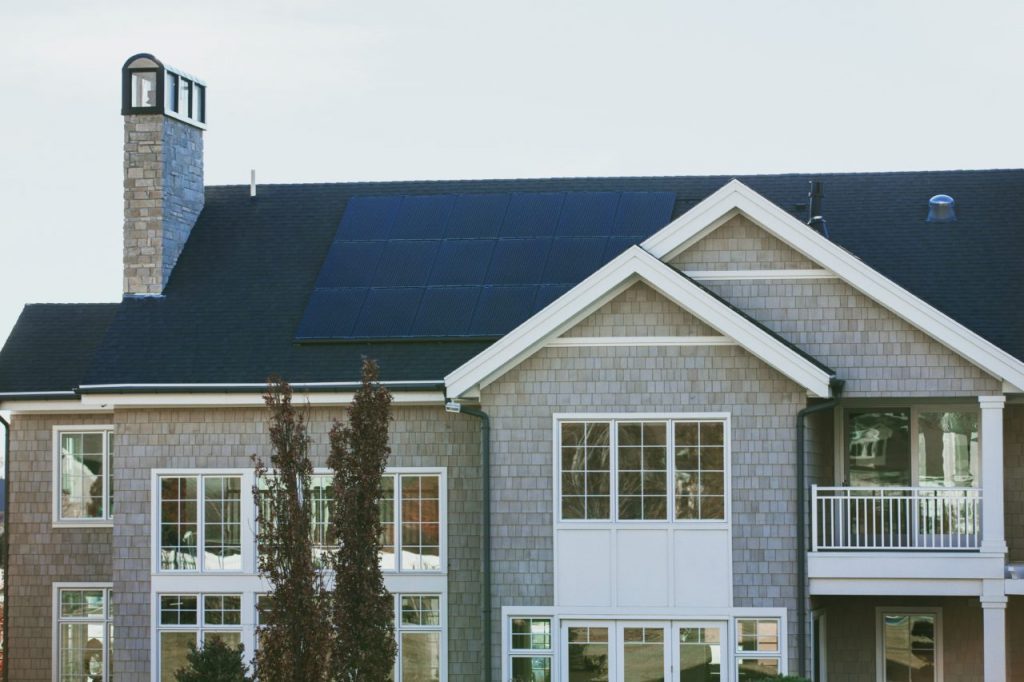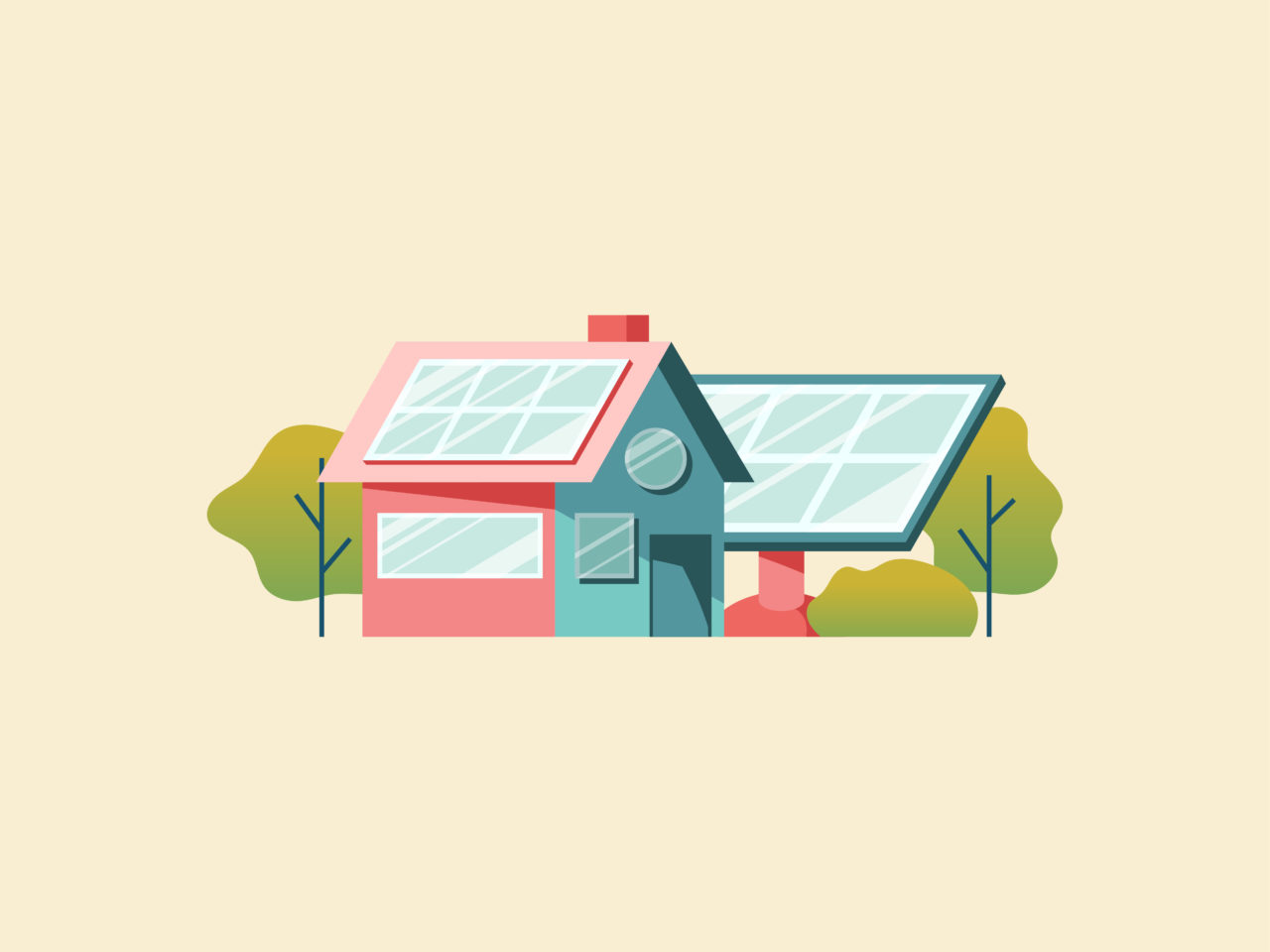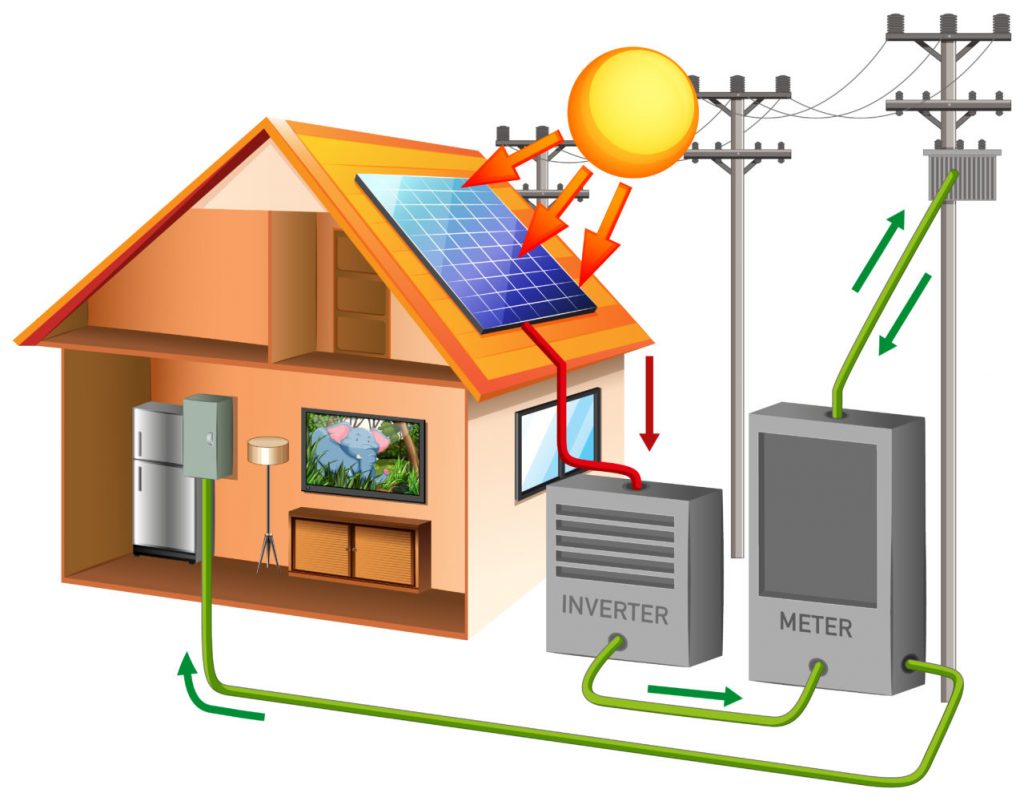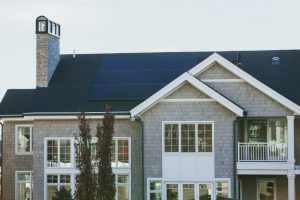Solar Power 101 – A Comprehensive Guide

Entering into a more sustainable future starts with everyday things, like energy consumption. The most effective way to use natural resources for renewable energy and also save the environment one electricity bill at a time is with solar power, powered by solar panels.
What is solar power:
Solar power is not new, in fact, it has been around for years, used BC to light torches by shining the sun through mirrors “burning mirrors” and then first scientifically recognized for its ability to produce electrical currents when metal was exposed to light in 1839, known as the “photovoltaic effect”.
Did you know that the first selenium solar cell was invented in 1883 by Charles Fritz, which, despite the fact that we use silicon in cells for modern-day solar panels, was a major stepping stone for the technology we have today?
1883, American inventor Charles Fritz created the first working selenium solar cell.3 Though we use silicon in cells for modern solar panels, this solar cell was a major precursor to the technology used today. Not to mention, the very well known, Albert Einstein, who in 1905 published a paper about the photoelectric effect and how light can carry energy.

How does it work:
Without taking you on a pretty intense science lesson, the basics of how solar power and solar panels work are here:
- They absorb sunlight with “photovoltaic cells” which generate a direct electrical current (DC), this is then converted into and alternating current (AC) or usable energy with the assistance of an inverter.
- AC is what flows through your home’s electrical panel and then it gets sent to areas that require it – e.g when you turn the lights on.
- Any extra electricity that your solar panels allow you to produce is sent to the electric grid as an overflow, often allowing you to reduce your electricity bills in the process.
What’s involved:
When you are considering getting solar panels there are a few things that you need to be aware of before you take the plunge.
Firstly, there are installation requirements, which incur a cost, depending on your location, you may be eligible for a rebate. When finding a suitable installer, it is a good idea to first look into your provider’s choice of installers and see if they will include it in the package, if not, get some quotes of your own before agreeing to their standard installer.
The basics:
- Panels
- Inverter
- Racking
- Performance monitoring (via an app or software)
- Solar storage (if you choose to)
- Battery

The key benefits:
- Save the environment by utilizing a natural power source – the sun.
- Reduce carbon footprint and pollution.
- Save money in the long-term on your electricity bill and get money back for power sent to the grid.
- Set your home up for higher resale value, solar panels are always a bonus selling point.
- Be more energy conscious and use only what you need.
Grid connection:
Solar panels are all connected to your home’s utility meter, which is what your chosen energy provider utilizes at when they measure how much power you are using and so they can supply power to your home when you need it. One way to find out how much power your solar panels are producing is to check this meter.
Net metering:
This system is a great way to not only save money on your electricity bill but also to ensure no power goes to waste. When you panels are working hard in the summer months or when you are away from home and not using power, instead of it all going to waste, excess power produced can be sent to the grid. In return for your “power donation,” you can get money off your bill in the form of credits (which are great to be used up when the sun isn’t at the top of its game). Net metering is like another way to store solar power, without needing the expensive technology to do so. When your energy needs are not being met by your solar panels, you can rely on your grid credits to keep you going, it’s win-win.
The benefit of net metering is that there is no longer a need to worry about poor weather, cloud cover etc. as you can still have power from the grid as well. Because of this super simple and effective solution, more and more people are opting to install solar panels on their rooves.
The details:
There are two main types of solar panels: Monocrystalline and polycrystalline. The main difference you need to be aware of is that monocrystalline cells are made up of “one” silicon crystal, whereas polycrystalline cells are made up of many silicon shards. Mono allows a better quality and more efficient form of solar power, but with this comes a higher price. Depending on your budget, household needs, and energy usage, either or of these could work for you.
Save more:
In order to get yourself the best deal possible on solar panels, it is important to “shop around” and gain multiple quotes. IN your area there could be many providers and installers, so be sure to do the math and secure a budget-friendly deal that will allow you to recoup your costs faster. The average cost for a standard-sized home can be anywhere from $10k-$20k depending on kW usage (before tax credit). The average cost per watt can be from $2.79-$3.54.
There is also a range of funding, initiatives, leasing options and tax benefits available in the United States, so be sure to find out what is available to you and your household.
Resources:
Sources:
https://www.vivintsolar.com/learning-center/history-of-solar-energy
https://www.aps.org/publications/apsnews/200904/physicshistory.cfm
https://www.solarreviews.com/solar-panels/solar-panel-cost/



